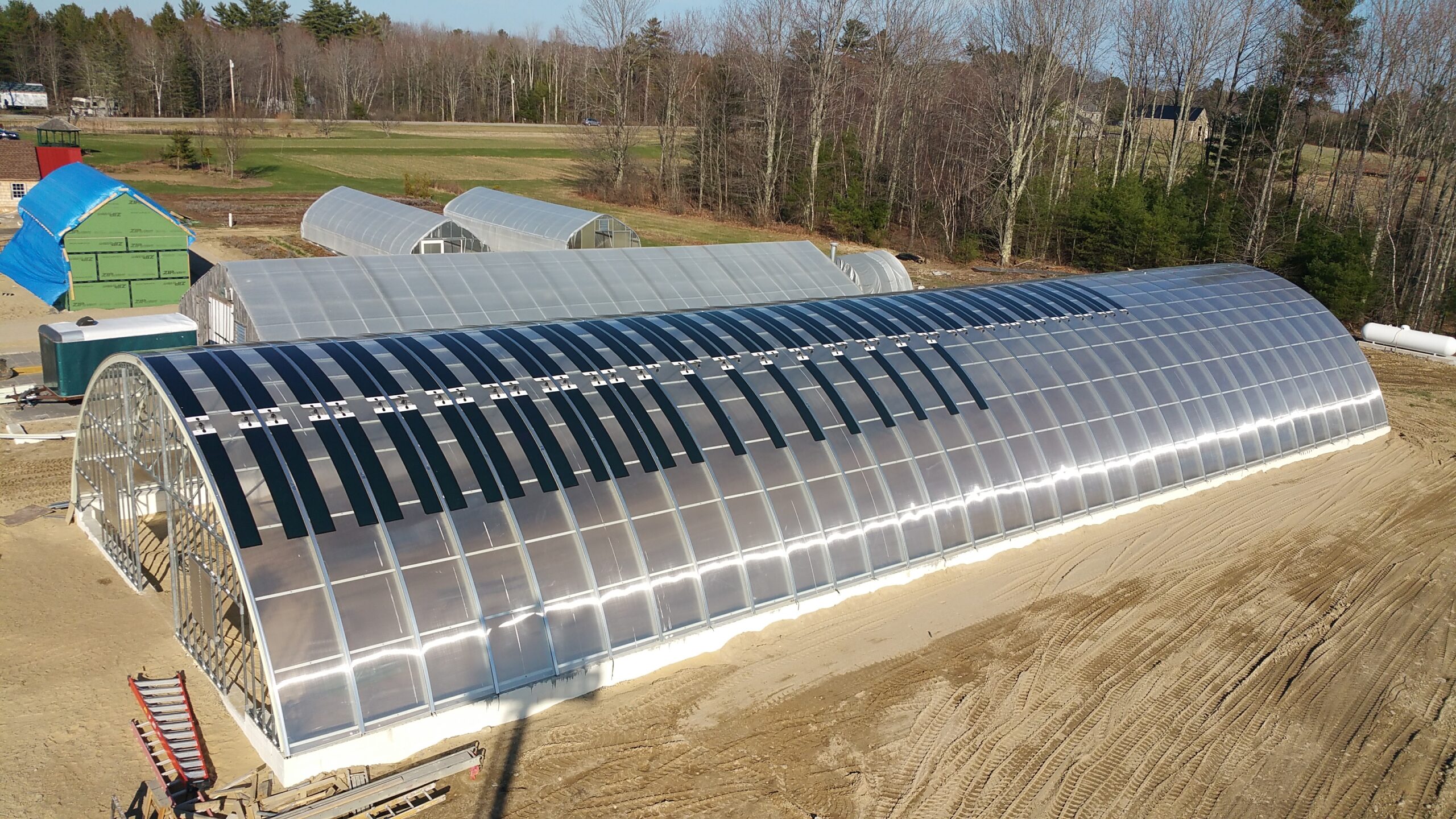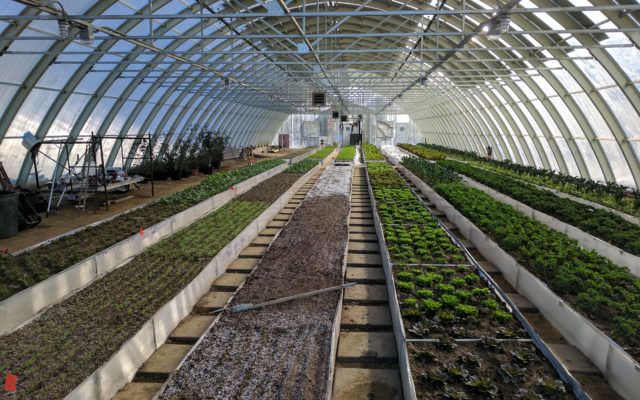
The University of Maine Presque Isle is joining a statewide research project on four-season food production and also building a new research greenhouse over the next year.
In collaboration with the Maine Sustainable Agriculture Society’s year-round agriculture initiative, UMPI professors and students will be comparing different greenhouse growing systems for a variety of vegetable crops, said Larry Feinstein, UMPI assistant professor of biology.
“We want to test soil-based versus hydroponic and LED versus high-pressure sodium lighting, and seeing the different productivity we get,” Feinstein said, referring to two different growing mediums and two different lighting systems.
The project will be partnering with the MSAD 1 School Farm and using the farm’s greenhouse space, which currently grows hydroponic tomatoes.
“Next fall, we’ll also have a greenhouse here at UMPI and may do a multi-site comparison,” Feinstein said.
UMPI is the fifth demonstration site with the Maine Sustainable Agriculture Society’s year-round initiative and the first one in northern Maine, said Bill Giordano, the society’s education outreach coordinator.
The Maine Sustainable Agriculture Society is a nonprofit devoted to helping Maine farms improve their operations, reduce off-farm inputs and ultimately “capture more of the consumer dollar,” Giordano said.
In 2014, the group started the year-round cluster initiative to investigate new infrastructure and technology approaches to year-round farming — as more small and mid-size farms in Maine and other northern states have been trying to extend their growing seasons or grow produce year-round under greenhouses.
“We’re trying to connect the dots, if you will, to see what we can do to build better infrastructure for year-round use,” Giordano said. Partners in the project include the Maine Technology Institute and Revision Energy.
One of the major challenges in year-round production is energy costs — heating greenhouses and providing supplemental light, Giordano said. But as solar power and other renewable energy systems have become more affordable and accessible, there are more options available for growers, he said.
“By integrating renewable energy into the building architecture, we’re starting to see some hope,” Giordano said.
- Greens grow inside the new solar power integrated greenhouse at Little River Flower Farm in Buxton. Designed and built by Arch Solar, the greenhouse generates much of the farm’s power needs and also has a direct-to-soil heat system for year-round flower and vegetable production. (Courtesy of Arch Solar)
The four other demonstration sites are Olivia’s Garden in New Gloucester, Little River Flower Farm in Buxton, Tao Yuan restaurant in Brunswick and the Waldoboro Business Park.
Olivia’s Garden grows hydroponic tomatoes, herbs and greens in traditional heated glass greenhouses at the Pineland Farms complex.
The farm is testing the viability of switching from high pressure sodium lighting to LED as a possible way to reduce energy consumption during winter, Giordano said. LED lights are more energy efficient than HPS — a long-time industry standard for indoor growing — although HPS lights also emit some heat, and it’s not clear if the savings from LEDs could be outweighed by extra heating costs, Giordano said.
Olivia’s Garden also is trialing the addition of a trout aquaponics system, which could reduce fertilizer needs.
Tao Yuan is experimenting with aquaponics, too, on a small scale. The Brunswick business has a climate-controlled, rooftop greenhouse above it downtown Brunswick restaurant.
At the Little River Flower Farm in Buxton and the Waldoboro Business Park, two similar buildings — solar powered quonset hut structures — are being investigated for different purposes.
At the Waldoboro Business Park, seafood company Acadia Harvest is using the new building for climate controlled storage. The structure has solar panels integrated into the roof, along with “phase change insulation” that slowly releases solar heat during the night.
Little River Flower Farm is testing the opportunities of such an advanced, climate-controlled structure as a greenhouse for vegetables and cut flowers. The farm’s quonset hut greenhouse also has solar-integrated into the roof of the greenhouse as well as a host of energy-saving and efficient heating features, Giordano said.
One of the systems, a wood pellet water heater, sends hot water through buried pipes to warm the soil — which could be just as or more effective than heating the greenhouse, Giordano said.
“A lot plants, as long as their root zone is happy, the top part of the plants can survive at much lower temperatures,” Giordano said. “Whereas, if the ground is close to freezing and it’s a 50 degree ambient air temperature, the plants struggle.”
These kinds of approaches to year-round growing are providing a good foundation for progress and there is a lot more still to investigate, Giordano said.
“We’re just scratching the tip of the iceberg.”








